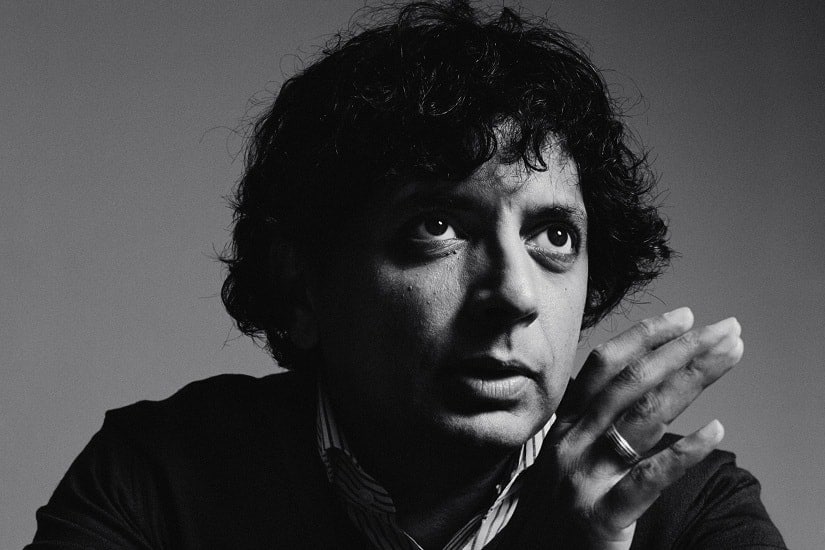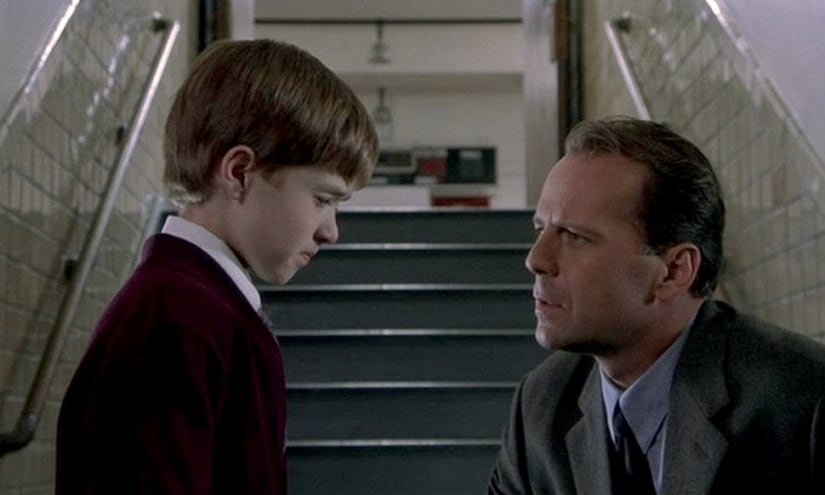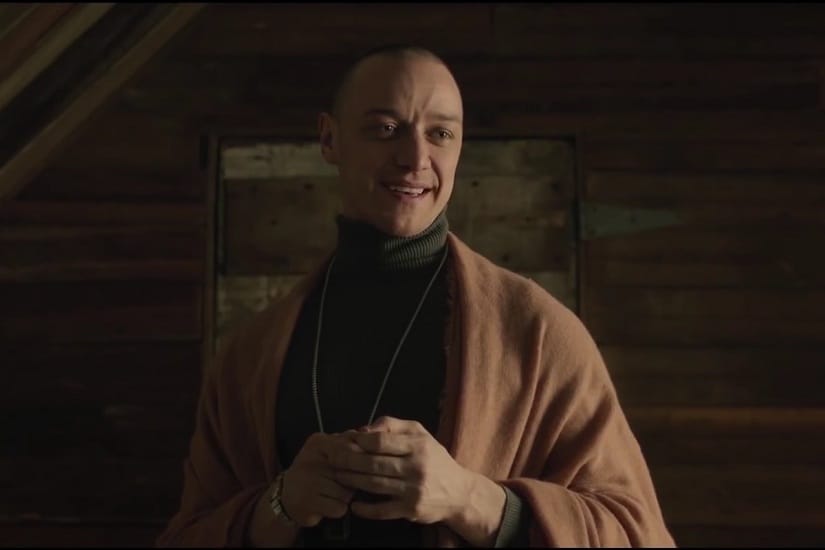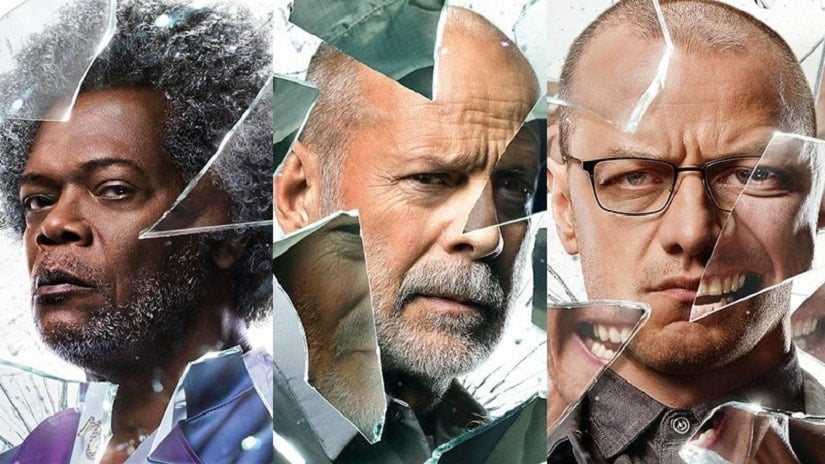It is quite convenient to overlook the fact that Manoj ‘Night’ Shyamalan directed two feature films before hitting it big time with The Sixth Sense (1999). But his next few films, The Last Airbender (2010) and After Earth (2013) — undoubtedly his worst and least representative of his talent — are better off forgotten. With Glass, the third installment in the Eastrail 177 trilogy (after Unbreakable and Split) set for release on 18 Jan, it is prudent to look back at Shyamalan’s whirlwind career. For its trajectory has always resembled one or the other of his conflicted heroes (or anti-heroes). However, like Mr. Glass and David Dunn, it couldn’t possibly have existed without finding its appropriate reflection in the discreet charms of Hollywood. [caption id=“attachment_5900701” align=“alignnone” width=“825”]  A still from the trailer of Glass.[/caption] Glass will bring together Elijah Price and David Dunn, the protagonists from Unbreakable (2000), and Kevin Wendell Crumb from Split (2016). Unbreakable was the story of Elijah Price, an art dealer, helping David Dunn, a security guard, discover his superpowers after a train derailment left him as the sole survivor. In Split, Kevin’s dissociative identity disorder was revealed to be a precursor to the awakening of another identity: The Beast, a super-villain. Presumably, Dunn will seek to stop The Beast from wreaking havoc on the world in the final chapter of the trilogy. But one cannot forget the title of the new film, which places Mr Glass in the light, so to speak. The first two films are named after Dunn and Kevin’s identities. So one can expect Price to play a prominent role in Glass. The genesis of an ‘M Night Shyamalan film’ Shyamalan’s career seems to parallel the arcs of his characters. He started out with Praying With Anger (1992), a self-produced film that never received mainstream distribution. The semi-autobiographical tale sees his protagonist, Dev, return to India, the land of his birth. This shouldn’t come as a surprise to anybody who’s been acquainted with Indian writing in English. More tellingly, however, Shyamalan plays the lead role, a portent of his Hitchcockian flair for cameos in his films. One can read this first film as a young creative artist’s attempt at understanding his roots. [caption id=“attachment_5900711” align=“alignnone” width=“825”]  M Night Shyamalan. Image from Twitter: @RollingStone[/caption] But neither his debut nor Wide Awake (1998), his next film, could have prepared anyone for the household name he’d become with the unprecedented success of The Sixth Sense. For his sophomore effort is a coming of age tale of a boy dealing in his own way with the death of his beloved grandfather. Like David Dunn, Shyamalan only really discovered his metier with The Sixth Sense, a supernatural thriller that lit up the box office. Much has been made of the twist ending, which revealed itself to be the proverbial albatross around the director’s neck in the years to come. But its gargantuan box office draw suddenly catapulted Shyamalan into the big league. Critics were largely kind in their reviews. Some called him the next Spielberg, others declared him the heir to Hitchcock. Everybody awaited the next M Night Shyamalan film with bated breath. The Sixth Sense, Unbreakable and Shyamalan’s tryst with the ’twist ending’ The freshly minted Hollywood darling dropped Unbreakable (2000) next. Everybody rushed to see the new twist ending, which came as it was designed to all along. But in doing so, they missed the point of everything that had come before it. Unbreakable is Shyamalan’s most complex film to date. Once again, it weaves the story of a grown man’s paternal relationship with a child — the father-son duo of the Dunns — into the fabric of a comic-book inspired story that is also a love letter to the art-form. But this was a time — believe it or not in our current Marvel era — when comic-book movies seemed an alien prospect to Hollywood. The film was marketed as another psychological thriller and Shyamalan’s intense explorations into the nature of good and evil had to wait for Unbreakable’s re-discovery as a cult movie years later. [caption id=“attachment_5900721” align=“alignnone” width=“825”]  The Sixth Sense.[/caption] Two films, two big twists; one shocked the world, the other left a bitter aftertaste. But it cemented Shyamalan’s image as the one with that final trick up his sleeve, which would witness a gradual erosion with Signs (2002) and The Village (2004). The latter in particular was bookended by a terribly contrived twist, which only served to ruin a perfectly enjoyable, competently crafted film. Shyamalan’s dalliance with the ’twist’, the pivot of his international fame, seemed to have run its course. The mirror held up by Hollywood had begun to show cracks. The director’s next few films, Lady in the Water (2006) and T_he Happening_ (2008) collapsed under the weight of his attempts to break out of his image. His flirtations with trying to forge a new identity were lent a final blow with The Last Airbender and After Earth, which, as stated earlier, are films that simply shouldn’t exist in the first place. Shyamalan is absent in these critical and financial disasters. It had become clear by then that the creative artist who was never short of great — cool would be the more appropriate word — was lost in the maze of identities he’d tried to tackle Hollywood with. More tellingly, Hollywood appeared to be done with him. How Split gave Shyamalan the comeback he needed In his more representative films, Shyamalan always weds a solemn tone to the outre nature of his ideas/premises. The films unfold at a deliberate pace. He wants the audience to trawl through the individual frames, occupy them, really see them, pick up clues to bead together the entirety of the story. The Sixth Sense possessed a sense of novelty since no one had been introduced to Shyamalan’s world. It forced throngs of cine-goers to watch it again and see what they missed. Unfortunately, Unbreakable seemed to have the opposite effect, presumably because everyone wanted the big twist to land and blow their minds. Unbreakable isn’t The Sixth Sense; it isn’t a film that revels in its ending. Shyamalan’s preoccupation with the ideas of human possibility and the near imperceptible co-existence of good and evil— mutually feeding off each other — were most firmly established here. So was his reverence for pop-culture, especially comic-books. The strength of his ideas was so overwhelming that the pacing, dialogue and editing issues that mar his films were generally overlooked by filmgoers. For a director who was rendered near untouchable by introducing something seemingly new into the horror idiom, his prescience with regards to the comic-book movie genre landed the first of many blows to his singular career. [caption id=“attachment_5900741” align=“alignnone” width=“825”]  James McAvoy in Split.[/caption] So it was only fitting that he marked his comeback of sorts with a horror film, namely The Visit (2015). He financed it himself, horror titan Jason Blum helped see it the light of day and it became a sleeper hit. It is a nifty, tight little film that helped Shyamalan get back into his stride. It gave him the confidence to trust his ambition again and birthed Split, which, by all accounts, was a roaring return to mainstream filmmaking form. It had all the ingredients of a Shyamalan film: a conflicted protagonist/antagonist, elements of the horror, superhero and thriller genres, and a couple of twists at the end, the last of which set the ball rolling in Rumourland. Did David Dunn’s appearance at the end of the film portend the development of a trilogy? Split gave a 2000% return on investment. Shyamalan was back. And right in the middle of the comic-book movie wave. There was a twist ending after all! High stakes with Glass Come 18 January and we will see Elijah Price aka Mr Glass, David Dunn and Kevin Crumb aka The Beast together in Glass. For once, Shyamalan’s characters arrive in a film fully formed. We know a lot, if not everything, about them. With that initial novelty — so essential to the best of his films — now gone, can he build upon audience expectations in a wholly different manner? The director has raised the stakes by putting a lot of his own money into the project. He has gone from being unbreakable to incredibly fragile in his career only to reawaken with a beastly roar in Split. It may appear ludicrous to chart the career of a creative artist according to the appearance and growth of his characters. But Shyamalan’s films have begun with apportionately incredible premises and ideas. Some of them capsized under the sheer weight of the ludicrous grandeur of his ambition. Others are discussed to this day. [caption id=“attachment_5900761” align=“alignnone” width=“825”]  The poster of Glass.[/caption] Wildly different things may come to mind when you think of his work. Shyamalan, the overtly indulgent artist, perhaps most egregiously on display in The Buried Secret of M. Night Shyamalan (2004), a self-celebratory documentary created with the express purpose of cementing his place within the pantheon of legends. Shyamalan, the prophet, who foresaw — not unlike Elijah, a Biblical prophet — the comic-book movie mayhem we live through today. Shyamalan, the flawed poet of intimacy and tender moments, whose films celebrate the virtues of family life and the little things that he believes can save us from onslaughts of megalithic proportions.
But one cannot ignore the excitement generated by the impending arrival of a M Night Shyamalan film.
Not unlike Tarantino, Nolan and Spielberg, his name is inextricably linked with the films he makes. This vendor and champion of myths, as silly as they are ambitious, drives audiences and their expectations to the theatre like few filmmakers alive. One would like to believe that he sees his own heroic resurrection in the fate of Glass. And that this time there won’t be a twist he didn’t see coming.


)
)
)
)
)
)
)
)
)



